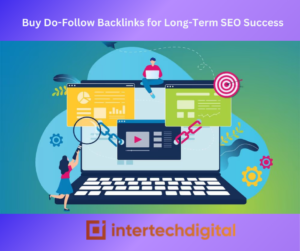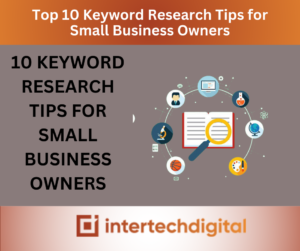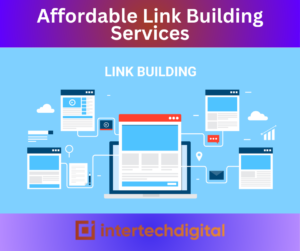Every year, tens of thousands of new items are introduced to the market, and many of the most promising fail to take off.
According to research, just 40% of innovative goods make it to market, and only 60% of those will produce a viable revenue stream.
When it comes to bringing a new product to market, there are a slew of mantras to follow. “Don’t sell stuff, sell dreams,” as Steve Jobs put it, or David Ogilvy’s “Customers don’t purchase products,” as David Ogilvy put it. They buy product benefits,” the argument remains the same: great product marketing is a delicate art that entices consumers to buy on their own terms rather than being forced to. And the launch establishes the tone for the project’s success or failure.
When it comes to introducing a new product, there’s a lot to think about, from positioning to selecting appealing material to planning out all launch activities. That’s why we’ve put together this product launch marketing guide to help you get started.

1. Plan out your product launch marketing strategy ahead of time
Business leaders may have high confidence in their ability to discover ideas, but their ability to market them lags behind, according to HBR. It’s crucial to strategize and design a complete marketing plan for a new product launch in order to get your go-to-market strategy properly.
Great products necessitate excellent marketing. That’s all there is to it.
Have a firm grasp of your product and target demographic.
It can’t be a guessing game when it comes to launching a new product.
Successful launch leaders, according to Bain, use advanced data aggregation and analytics technologies to better understand their target audiences. They’re 2.3 times more likely to comprehend their target audience’s wants if they pay attention to what they’re saying on social media.
So, take the time to learn about your users’ wants and pain areas, and utilize that information to create clear buyer personas. The days of one-size-fits-all marketing are over, so if you want to reach a certain demographic, make sure you speak their language and personalize your messaging accordingly.
Some of the things you should consider depending on your industry and emphasis are:
- For business-to-business:
- Demographics of the Firm (company size, industry, revenue)
- The precise decision-role maker’s and job title
- Problems and difficulties
- Values, goals, and motivations
- Factors influencing purchases and purchasing habits
In the case of B2C:
- Statistics on the population (age, location, language, occupation, income, etc.)
- Purchasing habits (social media usage, mobile presence)
- Interests and hobbies
- Problems and difficulties
- Values, aspirations, and motives
Make Your Product Story Unique
From hashtags to branding, your product launch must be told through a narrative that engages all of your stakeholders. The 5Ws (Who, What, When, Where, and Why) should always be addressed.
Making a positioning statement that addresses some of the most important questions about the product is a smart place to start. What is the name of this thing? Who is it intended for? What does it do, and how does it do it? What market is it hoping to break into? What values does it convey? What sets it apart from other items on the market? What is the overarching story that will make the product stand out?
Then you may take it to the next level. Compare and contrast your positioning statement with your buyer personas. What story would you tell to persuade them to change their minds? What type of messaging will they respond to the most? What adjustments should you make to your positioning to better align with their values and behaviors? Your narrative will be more watertight if you evaluate why they should buy the product and how it can improve their life.
Publicize Account Manager Daniela Restrepo emphasizes the importance of developing and implementing tactics that elicit authentic responses from target audiences. “Only these will lead to actions that result in social media and other platform interactions,” she says, emphasizing the importance of a compelling product story.
While having strong branding and rules for your product launch marketing is crucial, keep in mind that nothing should be set in stone. If you need to adjust your messaging as you go, go ahead and do so.
Create a Launch Strategy with Specific Goals in Mind
Not to deter you, but go-to-market disasters aren’t unheard of. Delays hurried last-minute modifications, and broken landing pages are all possibilities. To avoid this, make sure you have a clear plan in place with clear dates, roles, and objectives. Take a look at this fantastic template Asana created specifically for product marketing.
This plan then gives your team direction – some basic cooperation is required for a successful launch. Not only should your entire firm support the launch, but they should also contribute marketing ideas. When it comes to demonstrating value in the eyes of your target audience, your design team, for example, may have different perspectives than your sales team.
2. Use the internet to gain traction for your product launch.
All of your buyer personas are unlikely to use the same digital platforms or respond to the same trigger. So, take the captivating story you’ve been cooking up across your marketing platforms, and serve it up with calls to action and clear information.
Curate the Content on your Website
Assume it’s launch day, and your website is receiving its initial wave of visitors. The landing pages aren’t mobile-friendly, have problems, and take a long time to load. It’s a disaster, not only in terms of converting these first leads into customers but also in terms of your brand’s entire reputation.
With that in mind, optimize your website for SEO to avoid imposing a ceiling on your product launch success.
SEMRush, a website SaaS platform, discovered that the ideal range for page speed is between one and two seconds. Although a glance into the backend is required to make your website faster, quick improvements include changing the picture format or minimizing the number of plugins.
Mobile usability is also important: in 2016, mobile-only usage accounted for about 40% of daily usage time; in 2019, desktop and mobile usage were equal.
Experiment with an engaging design that allows visitors to tailor their experience when it comes to the product page itself. Allow them to modify the product or package to meet their individual needs, for example.
Ultimately, the goal is to provide information as plainly as possible while also including aspects that encourage users to take action. Calls to action are the primary KPIs for measuring product launch performance, whether it’s a promo magnet to expand your email list or an invitation to ask more questions in a live chat.
Consider providing free trials or product demonstrations. It can help you collect further feedback and even customer testimonials, which you can then boast about, in addition to allowing people to try out the product on their own. When you consider that 72 percent of clients will not make a purchasing choice before reading a review, this is crucial.
Using a Public Relations Strategy, Make a Splash in the Media
Unless you’re Apple or Microsoft, it’s unlikely that your product will make a big splash in the media. You can still engage in proactive public relations outreach to start critical conversations and explain why anyone should be interested in your product in the first place.
To begin, keep in mind that press releases are far from dead. They can assist you to generate attention and connect you with key media players if you showcase your product in a newsworthy way. Journalists and reporters can then opt to broadcast your announcement or work with you by writing guest pieces or conducting interviews. This method of increasing your digital presence and general media coverage will help your new product get visibility and trust.
While you might not get a piece on Forbes right immediately, know that industry journals, especially in the B2B sector, can help spread the word. It’s crucial to note, though, that earned media coverage takes time, therefore a public relations strategy for your product launch should be planned ahead of time.
Create Content for the Launch of your Product
“Content is the reason search began in the first place,” explains Lee Odden, a well-known marketer. To increase website traffic and inspire customers to learn more about your product, you must provide a richness of content that addresses the concerns of your stakeholders.
Blog entries, in particular, provide the ideal opportunity to establish a more personal connection with your readers. So make sure to use storytelling, which is the most humanistic way of communication. Share some behind-the-scenes information or describe the impact your product is attempting to have, as well as the complexities of how to use it to its full potential.
Keep the Following Content Marketing and SEO Recommended Practices in Mind at all Times:
Research keywords: The key to developing relevant content is to figure out the keywords that pertain to your product that your audience actually looks for.
Structure your material appropriately: Text formatting is important for SEO searches and offers other benefits, such as the ability to rank snippets with tables of contents on search engines.
Create snappy meta descriptions: You can summarize the information to make it more easily accessed by writing snappy meta descriptions.
Optimize for readability: Readability is a crucial part of SEO, from the use of transition words to the use of paragraphs of a reasonable length. However, keep an eye on the length (both in titles and the whole text overall).
Start a Conversation on Social Media and via Email
You can repackage the material you make for all of your marketing platforms, which is the beauty of it. Rather than writing a fresh tale for each social media platform, look at your existing story and consider how you might adapt it to fit each platform.
You may use social media analytics to determine which endeavors are worth pursuing and which conversations you should participate in. It also aids in the discovery of user-generated material related to your product, the monitoring of hashtags, and the learning of more about your target audience.
Make the most of all the tools available, including social stories with teasers, Q&A live streaming, and prizes or competitions. Don’t be hesitant to put a face to your product; for example, insights from the development team can be incredibly useful. There are no boundaries; even influencer collaborations should not be ruled out!
When you’re on social media, make sure to engage new customers and retarget old ones with interesting adverts. Video advertising are particularly appealing, as seen by the fact that spending on video ads is expected to increase from $10.18 billion in 2019 to $12.66 billion in 2024.
3. Maintain the Momentum After the Launch
If your actions don’t produce conversions straight away after launch, remain patient.
Understanding your audience’s decision-making process will reveal what they consider before acquiring products similar to yours, so have a solid lead-nurturing strategy ready. You can keep prospects interested until they’re ready to buy using emails, webinars, or special offers.
It’s critical to keep a careful check on the strategy’s performance in order to alter and pivot as needed. Compare your progress to the goals you set before you launched – what can be adjusted if you aren’t accomplishing them? Is there a winning strategy you should stick with?
Obtaining input from early adopters of your product via surveys or questionnaires can reveal a plethora of data that can be used throughout the development process.
There’s a good chance you’ll get some amazing testimonials along the way, which will help you finish the marketing loop. Why not try something different while you’re at it? Slack published a video titled “So Yeah, We Tried Slack” by one of its customers in 2014. This video testimonial has received over a million views to date, which speaks something about the quality of the storytelling.
Many firms slow down their marketing efforts once they debut, but it’s still crucial to keep up the momentum. That does not, however, imply that the strategy should remain unchanged: For example, thought leadership ideas should be prioritized in public relations, and website material should be diversified with more case studies demonstrating your product in action.
After all, product launch marketing is only the beginning of the product life cycle, and there’s a long road ahead of you.



